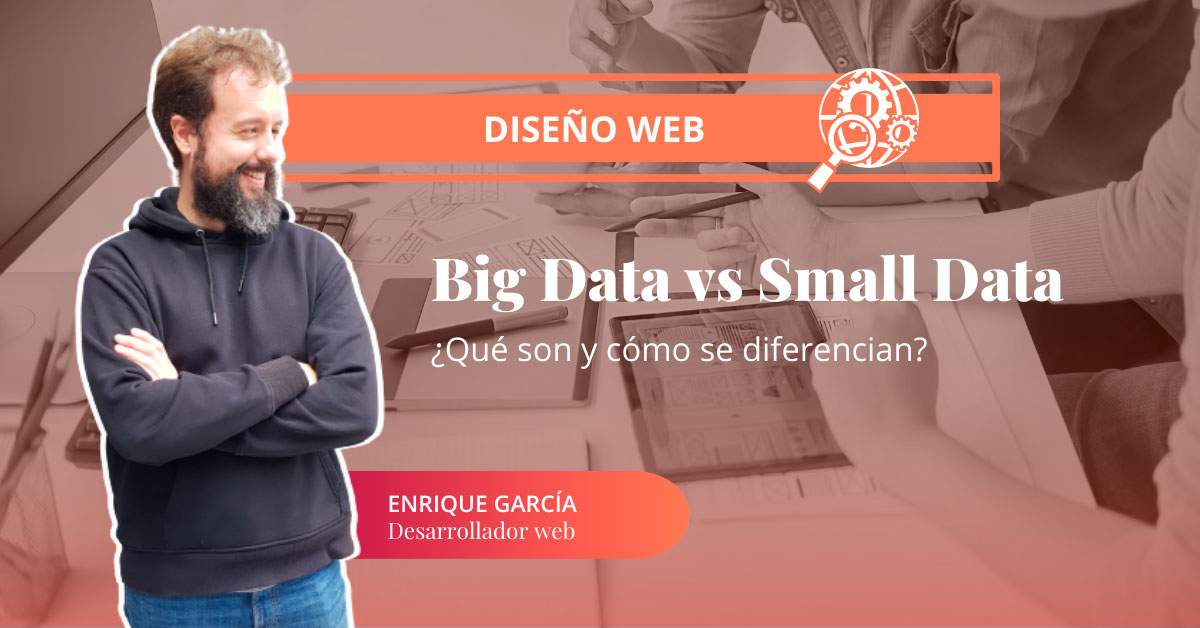In recent years, not only has the world of digital marketing and social media grown and continues to grow at a rapid pace, but technology, web development, and data have also experienced exponential evolution. Terms like Big Data, Small Data, Machine Learning, and Artificial Intelligence are becoming increasingly common. But what is Small Data, and how does it differ from Big Data in this constantly changing and growing technological landscape?
What is Small Data and What is it For?
Small Data is a limited, specific, and manageable set of data that allows extracting valuable and useful information for decision-making. It refers to the data that companies have been using for years to understand their customers and improve business performance. This type of data is collected through surveys, interviews, questionnaires, forms, and other methods.
What is Big Data?
On the other hand, Big Data refers to large datasets that cannot be processed using traditional data processing tools. These datasets are very large, complex, and generated in real-time, requiring advanced technologies for processing and analysis. Generally, it refers to information found on the internet, social media, sensor systems, and more.
Big Data vs. Small Data
Although Big Data has captured attention in recent years, Small Data is equally important for businesses, as it allows them to understand their customers more deeply and personally. Through data collected via surveys and other means, companies can learn about the interests, needs, and preferences of their clients. This enables them to make informed decisions and offer products and services tailored to their customers’ needs.
Another difference is that Small Data is more accessible and manageable for companies because its volume is limited. Therefore, companies can use traditional data analysis tools, such as spreadsheets and dashboards, to process and analyze this information.
Processing and analyzing large volumes of Big Data requires more advanced technologies and specialized teams. Companies need to invest in data analytics tools, data storage solutions, and specialized staff to process and analyze large datasets.
It is important to highlight that Small Data and Big Data are not mutually exclusive. Companies can combine both to achieve better results. Big Data can provide additional information to enrich Small Data, and Small Data can serve as a foundation for Big Data analysis. In this way, companies can obtain a more complete view of their customers and improve business outcomes.
Why is Combining Both Technologies Important?

Although Small Data is a more affordable technology for companies and better suited to current business processes, the importance of Big Data today cannot be overlooked.
With the increase in the use of mobile devices, sensors, and IoT technology, the amount of data generated daily is growing rapidly. For this reason, companies need Big Data technologies to manage and analyze this information.
Combining both technologies allows companies to leverage the benefits of each. Big Data allows companies to obtain valuable insights from large volumes of data, while Small Data allows business users to access relevant and useful information quickly and easily.
Integration of both technologies also enables better decision-making, as historical data can be combined with real-time data to obtain a more complete and accurate picture of the current situation.
Moreover, it can also improve a company’s operational efficiency. For example, a logistics company can use Big Data to optimize transportation routes, while business users can use Small Data to track delivery progress and detect potential issues in real time.
The future of companies largely depends on their ability to make the most of the information available, whether through Small Data, Big Data, or a combination of both technologies. Therefore, it is crucial to stay up to date with the latest trends in technology and data to remain competitive in a constantly evolving market.



